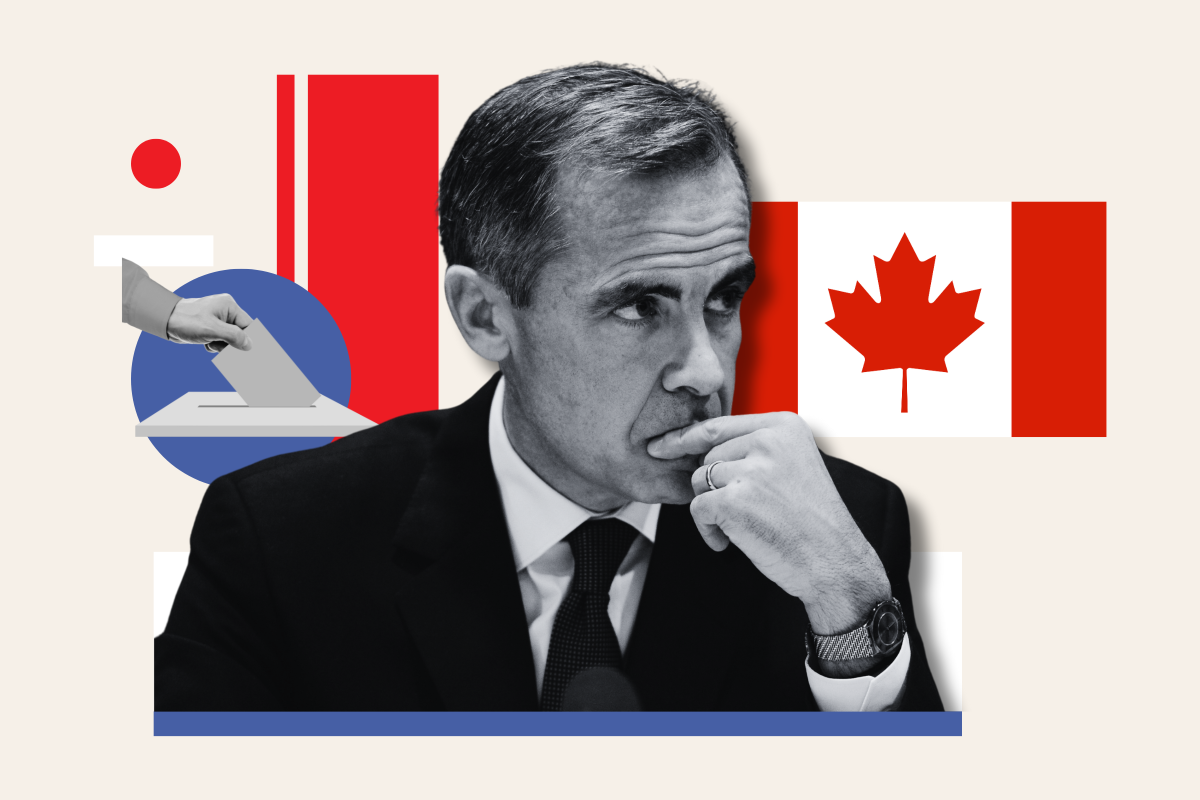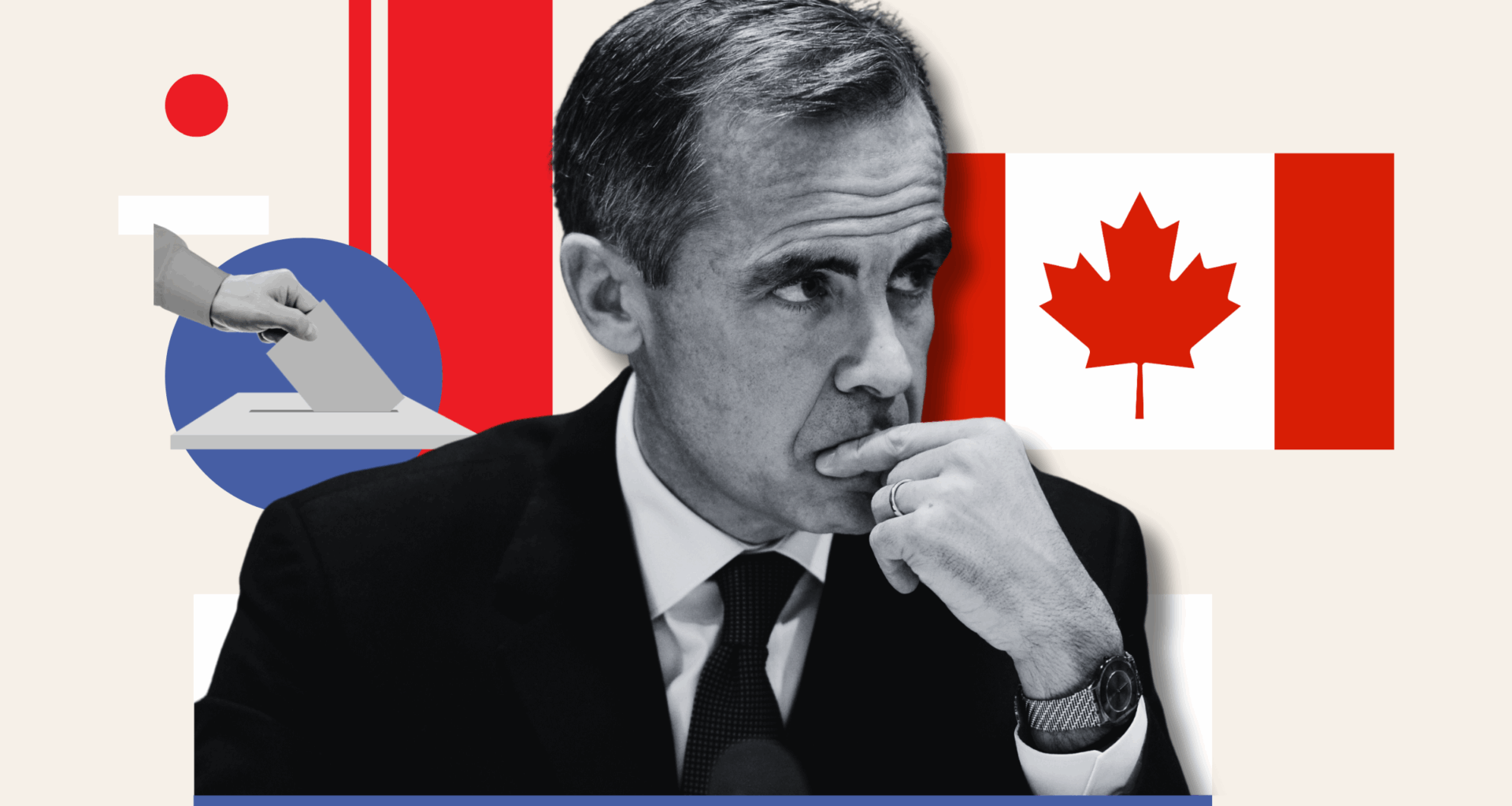Mark Carney’s Liberal Party is predicted to win this week’s general election in Canada, but is unlikely to win a landslide, according to recent polling.
As of the 2025 federal election, the Canadian House of Commons comprises 343 seats, an increase from the previous 338. This adjustment reflects the electoral redistribution based on the 2021 Canadian census, marking the first election conducted under the new 343-seat electoral map.
The changes mean that the winning party would need to secure 172 seats to win a majority and avoid forming a coalition, while winning more than 200 seats would be seen as a landslide victory.
But polls suggest that the Liberal Party is likely to fall short of a landslide victory.
Why It Matters
Carney, who recently succeeded Liberal Justin Trudeau as prime minister, has called snap elections for April 28, in what is seen as a major test of how far attitudes have changed toward the previously clear favorite, Poilievre, who has been compared ideologically to President Donald Trump.
The election comes as the friendly rapport between Canada and the United States has soured, with tensions elevated in recent weeks following Trump’s tariff agenda and repeated remarks about making Canada the 51st state.
U.S.-Canada relations are expected to be a defining issue in the upcoming election, as both parties grapple with rising tensions and concerns about national sovereignty.

Mark Carney’s Chances of Winning a Landslide in Canada Election: Polls
Mark Carney’s Chances of Winning a Landslide in Canada Election: Polls
Photo-illustration by Newsweek/Getty
What To Know
Election forecasts show the Liberal Party, now led by Carney, surging ahead in the polls, but a dominant landslide victory remains uncertain.
According to CBC News’ projection model, the Liberals have a 74 percent chance of forming a majority government, with the Conservatives trailing far behind at just 8 percent. CBC’s current projection puts the Liberals at 190 seats—just above the 172-seat threshold for a majority—while the Conservatives are expected to secure around 125.
The Bloc Québécois is projected to take 22 seats, while the NDP is forecast to win just five, marking a steep decline. The Green Party is expected to retain a single seat.
YouGov’s election model paints a similar picture: a Liberal win with between 163 and 201 seats (median: 182), and the Conservatives taking between 115 and 153 seats (median: 133). In that scenario, a hung parliament remains within the realm of possibility.
Much of the Liberals’ momentum stems from their ability to capitalize on the NDP’s collapse and outperform the Conservatives in key battlegrounds. While the Liberals and Conservatives are expected to exchange about 12 seats between each other, the Liberals are projected to gain 13 NDP-held ridings, compared to just seven for the Conservatives. In Quebec, the Liberals are forecast to flip 11 seats from the Bloc Québécois, while the Conservatives are only expected to win one.
YouGov also anticipates that the NDP will suffer its worst-ever performance, with just four seats, while the Bloc could lose 23 seats compared to its 2021 showing. The Green Party is likely to maintain its two current seats.
On the national vote share, projections suggest the Liberals will capture about 42 percent, followed by the Conservatives at 38 percent. The NDP trails at 10 percent, with the Bloc at 6 percent, and both the Greens and the People’s Party hovering around 2 percent.
The 338Canada projection model shows similar trends, giving the Liberals at least 186 seats and the Conservatives 124. The Bloc is projected to win 24 seats, the NDP eight, and the Greens one.
The dramatic turnaround for the Liberals follows months of political turmoil and economic unease. Under Trudeau, the party was headed toward likely defeat amid criticism over the economy. But everything changed in December, when Trump threatened heavy tariffs on Canadian goods, triggering a nationalist backlash that reshaped the political landscape.
The surge in Liberal support coincided with Trudeau’s resignation and the rise of Carney, a former central banker. Carney currently holds a 48 percent approval rating—significantly higher than his rivals—and is the only federal leader with a net-positive favorability rating, according to Ipsos.
What Happens Next
Canadians will head to the polls on April 28.
